Let’s face it: when most people think “airport,” they think long security lines, overpriced sandwiches, and fluorescent lighting straight from a dentist’s worst nightmare. But hidden among the generic terminals and endless conveyor belts of lost luggage, there exists a rare breed of airport—one that dares to be beautiful, architectural, even romantic.
These are the flying unicorns of the travel world. The kind of places where you actually want your flight to be delayed. Over the last few years, airports have evolved from being points of transfers to indelible experiences. In this guide, we are going to look at the most beautiful airports in the world;
Please Download Our Mobile App here.
Changi Airport, Singapore
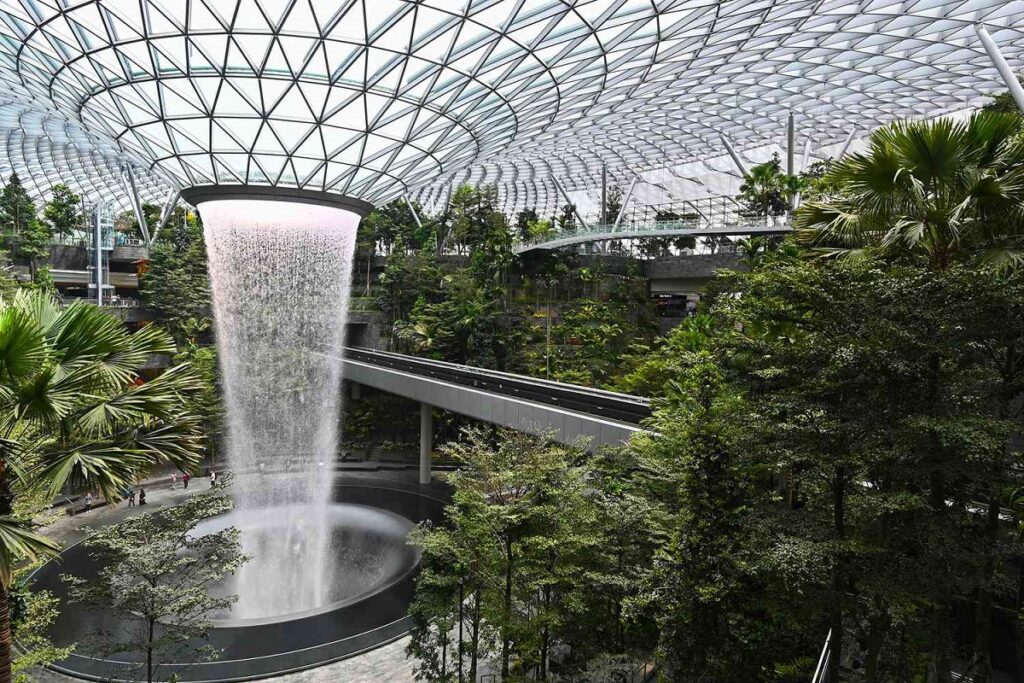
Singapore’s Changi Airport isn’t just a transit hub—it’s a destination in itself. Often hailed as one of the world’s most beautiful airports, Changi stuns travelers with its architectural showpiece, The Jewel. It’s a breathtaking glass-domed complex housing the Rain Vortex, a 130-foot indoor waterfall cascading through a vibrant indoor rainforest.
But this airport isn’t just a pretty face. It doubles as an entertainment haven, featuring everything from a 24-hour movie theater and gaming lounges to a butterfly garden and even a rooftop swimming pool for those in-flight layover spa moments.
Canopy Park, perched at the top of The Jewel, invites visitors to wander through walking trails and terraced gardens, blurring the line between airport and amusement park. With its fusion of biophilic beauty and world-class efficiency, Changi continues to redefine what an airport can—and should—be.
Hamad International Airport, Qatar
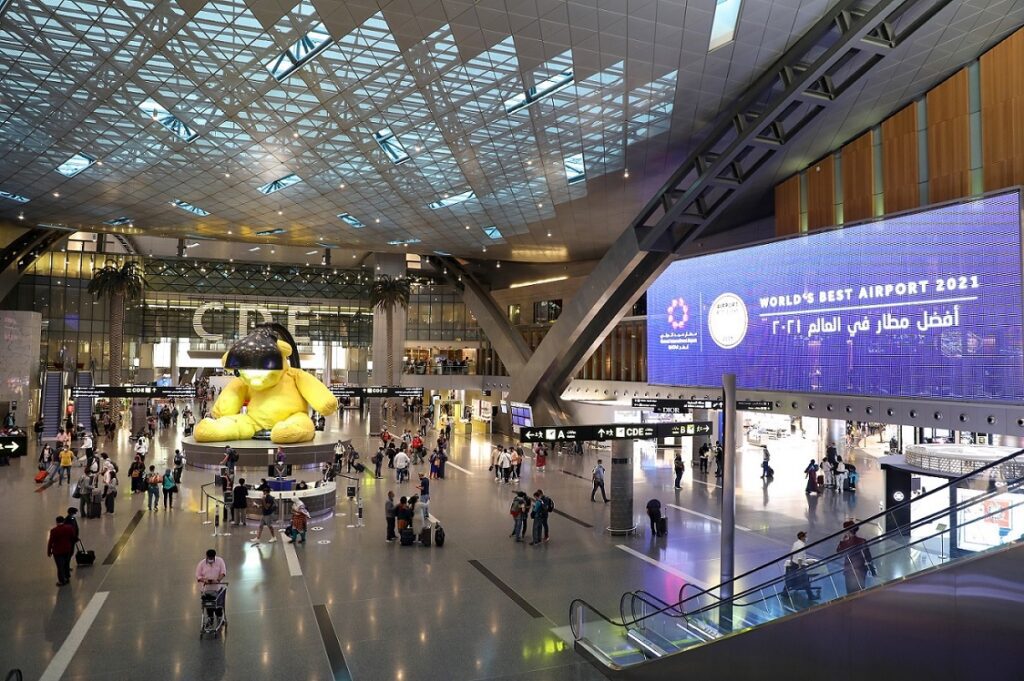
Hamad isn’t just a stopover—it’s a destination in itself. With its sweeping open spaces, cathedral-like ceilings, and serene ambiance, it feels more like a five-star resort than a transport hub. The airport effortlessly blends contemporary art with indulgent comfort, offering travelers access to luxury lounges and quiet relaxation zones.
There’s also a wellness area complete with an indoor swimming pool and squash courts—because why not work on your serve between flights? Its crown jewel, Urs Fischer’s iconic Lamp Bear, looms at an impressive 234 meters and is among the most expensive airport artworks in the world. A perfect marriage of modern design and opulence, it’s no surprise this Qatari airport consistently ranks among the most beautiful on the planet.
Istanbul Airport, Turkey
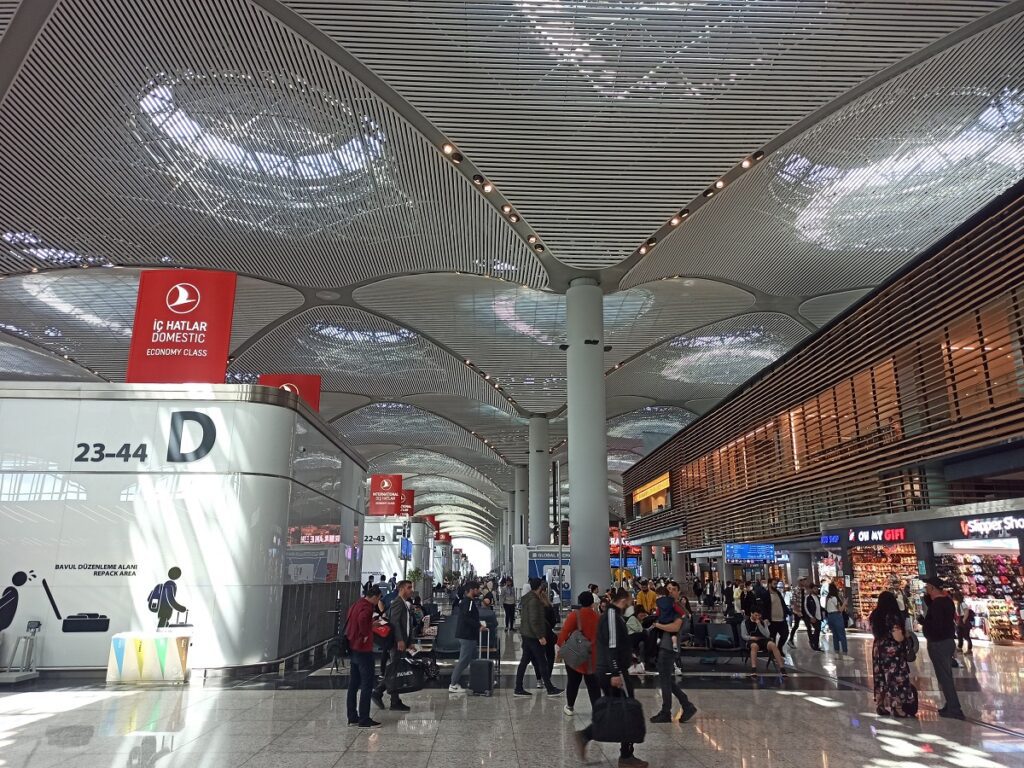
Istanbul Airport isn’t just an airport—it’s a bold statement in steel and glass, built with the ambition of becoming the largest airport on Earth. Marrying sleek modern minimalism with echoes of traditional Turkish architecture, the terminal is a sprawling, cathedral-like space centered around a vast, naturally lit atrium.
Its soaring arches and high ceilings don’t just impress—they pay subtle homage to Istanbul’s rich, layered past. But this isn’t a museum; it’s a marvel of modern functionality. Designed with the future in mind, the airport boasts cutting-edge digital signage, smart kiosks, and lightning-fast passenger processing systems that keep the flow smooth even at scale.
Hong Kong International Airport, China
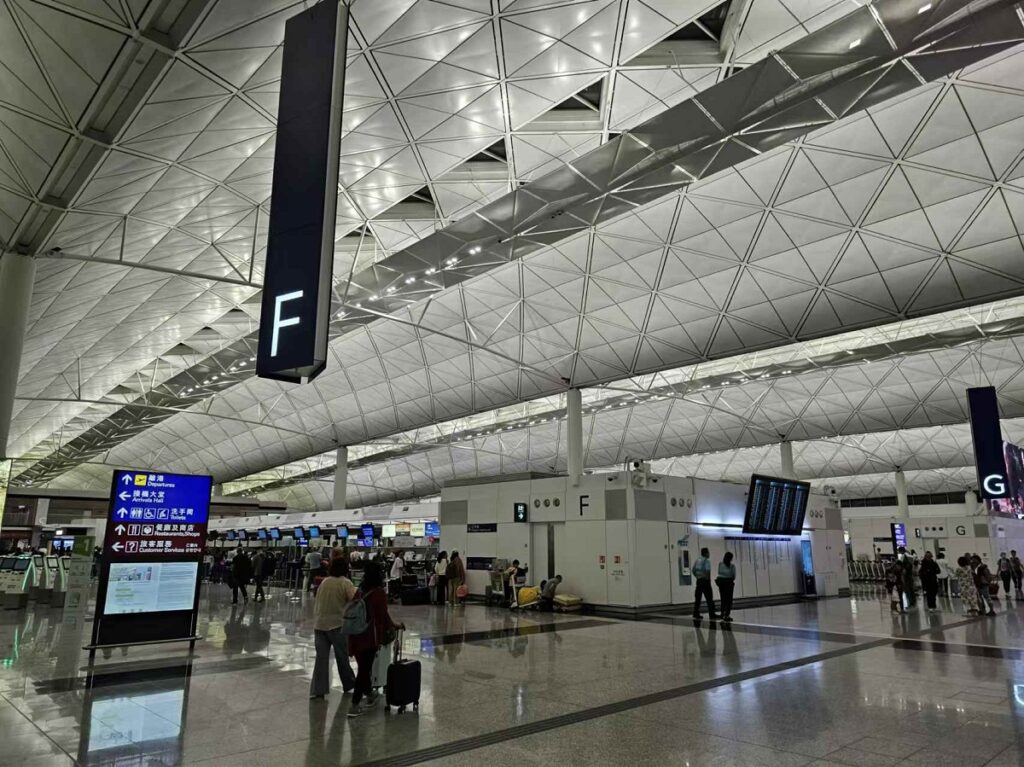
Perched on a man-made, Hong Kong International Airport isn’t just a transit hub—it’s a full-blown architectural and engineering spectacle. With vast glass walls that flood the space with natural light and frame the runway like a living postcard, the airport blends form and function effortlessly.
It’s also a haven for layover luxury: from high-end boutiques and world-class restaurants to the massive 8 Skymart shopping complex—one of the largest airport malls in Asia. A sleek layover hotel within the terminal makes catching a few hours of sleep between connections a breeze.
But it’s not all glitz—this airport is as smart as it is stylish. According to SITA, it’s been a trailblazer in baggage tracking technology, helping slash lost luggage incidents by 25%. If you thought airports were just chaotic pit stops, Hong Kong International is here to change your mind—and possibly your entire definition of travel comfort.
Tokyo Haneda Airport, Japan

Tokyo’s Haneda Airport isn’t just a gateway to Japan—it’s a full-on immersion into the country’s culture the moment you step off the plane. Unlike most airports that feel like sterile transit zones, Haneda greets travelers with Edo-period charm and futuristic precision.
The terminals feature beautifully crafted wooden structures inspired by ancient Tokyo (then called Edo), forming Japanese-style shopping and dining streets. Beyond the aesthetics, Haneda nails the logistics too—it’s consistently ranked among the world’s cleanest and most punctual airports.
Also, its seamless connection to central Tokyo via high-speed rail makes arriving almost suspiciously convenient. It’s this harmony of heritage and high-tech efficiency that puts Haneda on a level all its own—less airport, more cultural prelude.
Zurich Airport, Switzerland
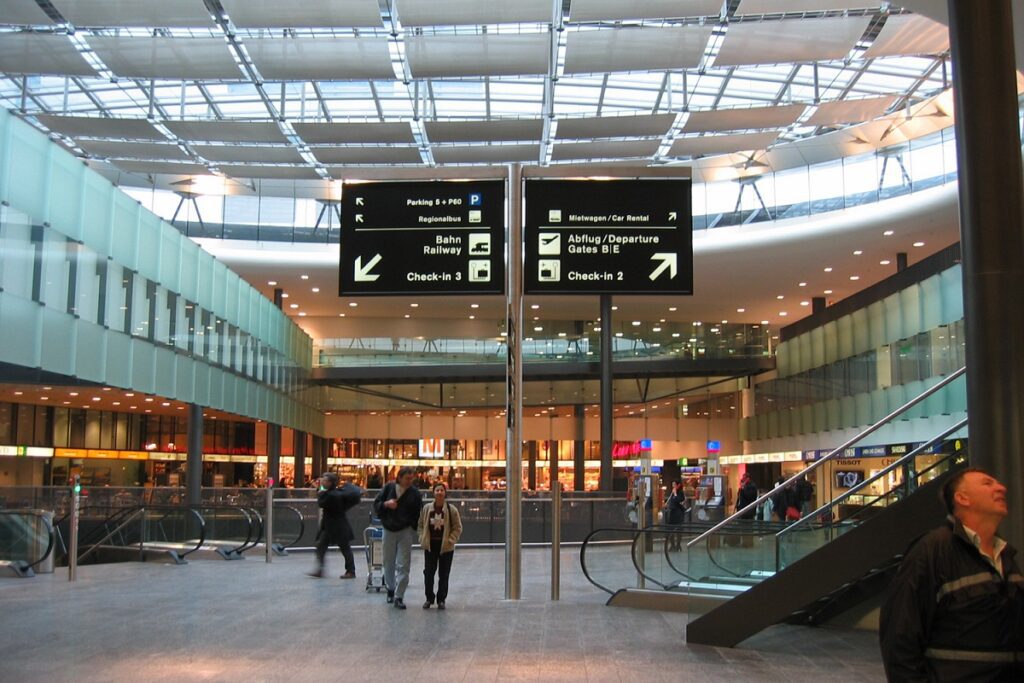
Zurich Airport is where Swiss precision meets architectural elegance. With its sleek, streamlined terminals and ultra-functional layout, the airport doesn’t just operate efficiently—it looks like it was engineered by time itself. It’s one of the few airports where missing a connection almost feels like a gift.
And while you’re waiting, why not take in the action from the open-air observation deck? It offers panoramic views of the runways, where you can watch planes take off and land with a precision that could only happen in Switzerland. Better yet, Zurich Airport connects seamlessly to the country’s famously punctual public transport system—because of course it does.
Dubai International Airport, UAE

Dubai International Airport isn’t just an airport—it’s a full-blown luxury lifestyle experience at 30,000 feet. True to the city it calls home, the airport does absolutely nothing by halves. Whether you’re indulging in world-class shopping or dining like royalty before boarding, this airport is designed to impress.
Terminal 3 alone is a marvel—it feels more like a high-end mall than a transit hub. First-class flyers can retreat to VIP lounges equipped with private sleeping pods. The Zen Garden tucked inside the terminal offers a surprisingly serene break from the airport hustle.
And don’t let the opulence fool you—Dubai International is just as committed to speed as it is to splendor. It has AI-powered immigration gates and biometric check-in systems that have slashed passenger processing times by a remarkable 40%.
Conclusion
Let’s be real—no one’s booking a flight just for the airport (unless you’re on a first-name basis with your airline’s Platinum concierge). But maybe we should be. These architectural wonders remind us that even in the chaos of travel—there’s a moment of calm, beauty, and even awe to be found.




